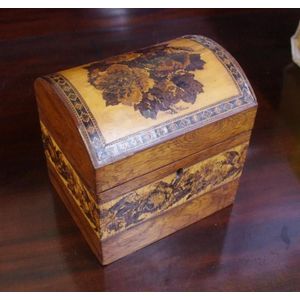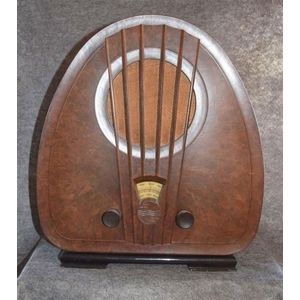Victorian Kneeler Set with Mirror and Footstool
A Victorian Kneeler with needlework cover, a small footstool and a mirror, 19th to 20th century, the long kneeler of typical low form with six toupie feet and having a floral tapestry cover on an olive ground; a small round footstool with four small cabriole feet; and a gilt framed oval bevel mirror. Kneeler height 19 cm. Length 112 cm. Width 28 cm. Mirror length 82 cm. Width 51 cm
You must be a subscriber, and be logged in to view price and dealer details.
Subscribe Now to view actual auction price for this item
When you subscribe, you have the option of setting the currency in which to display prices to $Au, $US, $NZ or Stg.
This item has been sold, and the description, image and price are for reference purposes only.
- Victorian Period - The Victorian period of furniture and decorative arts design covers the reign of Queen Victoria from 1837 to 1901. There was not one dominant style of furniture in the Victorian period. Designers used and modified many historical styles such as Gothic, Tudor, Elizabethan, English Rococo, Neoclassical and others, although use of some styles, such as English Rococo and Gothic tended to dominate the furniture manufacture of the period.
The Victorian period was preceded by the Regency and William IV periods, and followed by the Edwardian period, named for Edward VII (1841 ? 1910) who was King of the United Kingdom and the British Dominions and Emperor of India for the brief period from 1901 until his death in 1910. - Bevel / Chamfer - In furniture making, a chamfered corner refers to a technique used to create a smooth, angled edge on the corner of a piece of furniture. This is typically done by cutting away a small portion of the corner at an angle, typically 45 degrees, creating a diagonal edge, rather than a sharp 90-degree angle. This technique can be used on various parts of a piece of furniture such as table legs, drawer fronts, or door frames. Chamfering can add visual interest to a piece and can help to soften the overall look of a piece of furniture. It is often used in conjunction with other techniques, such as rounding edges or using contrasting wood species to create a more elegant, sophisticated look. Chamfering is a simple way to add a touch of elegance to a piece of furniture and it is a common technique used by furniture makers.
This item has been included into following indexes:
Visually similar items

Sold by
in
for
You can display prices in $Au, $US, $NZ or Stg.

Antique Tunbridge ware tea caddy, with mosaic floral decoration & domed hinged lid, 14.5 cm high approx
Sold by
in
for
You can display prices in $Au, $US, $NZ or Stg.

Sold by
in
for
You can display prices in $Au, $US, $NZ or Stg.

A Philips 834AS Super Inductance Bakelite front valve radio serial number 62224F, 45 x 40 x 23 cm
Sold by
in
for
You can display prices in $Au, $US, $NZ or Stg.
